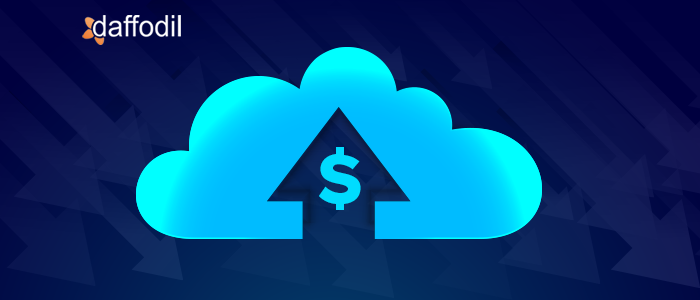
The worldwide public cloud services market is expected to be valued at $304.9 million by 2021. Businesses are going to increase their spending on the public cloud with SaaS, LaaS, DaaS, and IaaS services in the mainstream.
According to statistics by Gartner, Software-as-a-Service (SaaS) is the largest market segment and is forecasted to grow to $120 billion by 2021. The rising need for new software tools during the COVID pandemic and the shift from on-premise to subscription-based SaaS models is driving SaaS growth.
The second-largest market segment is Infrastructure-as-a-Service (IaaS) which is projected to grow to $64 billion by 2021. Organizations moving from their legacy infrastructure operating models to newer ones is promoting the growth of the IaaS model.
Another growing market segment is Desktop-as-a-Service (DaaS). It is expected to grow to $1.9 billion by 2021. In effect to the pandemic, enterprises are supporting the remote-work model. With this, it has become important to provide access to enterprise applications that employees can access from multiple locations and devices.
With enterprises making huge investments in public cloud infrastructure, managing the complex and dynamic environment of resources becomes necessary. With users having the privilege to choose from a wide range of storage types, instances, and payment plans, spinning up new cloud resources is easy. This often results in a high cost of resource consumption.
To make the most of public cloud services, cost monitoring and optimization should be a constant practice by the Cloud Center of Excellence (CCoE). To optimize cloud cost, it is important to identify the inefficiencies in a cloud environment.
In this blog post, we share 5 mistakes that usually shoot up cloud bills (and have come right from the desk of our CloudOps experts). Let’s understand what they are and what’s their impact on the cost of cloud infrastructure.
Mistake 1: No Track of Unused Instances
Idle, aging, or inactive instances can build up the cost of cloud infrastructure. These resources either give low or zero returns for keeping them in the environment.
- Idle instances are those that were reserved for a purpose but are no longer needed.
- Aging Instances are those that are part of a system for a long time but are no longer needed.
- Inactive instances are those that are non-functional for a long time
In all the above three conditions, resources aren’t utilized well. This situation, where there is an uncontrolled proliferation of cloud instances is known as Cloud Sprawl.
In a cloud sprawl condition, the organization runs up massive bills for uncontrolled instances which usually result from development testing or shadow IT projects. The CCoE in an organization can either track instances manually or through cloud management software.
Mistake 2: Not Managing Instance Size
If the cloud environment has improperly sized cloud instances, it can wreak havoc on the budget and impact performance. That is why it is important to determine the type of instance and its size.
Imagine a website having 80% usage during peak hours and only 5% in the meanwhile. In such scenarios, the resources (say 4CPUs, 16GB RAM, ...and so on) at peak hours can be scheduled to drop down to 1 CPU, 2GB RAM, ...and so on. Such scheduling of resources can reduce the overall cost by 50%. An IT team or CCoE can customize the instances based on specific use cases or start scheduling them so that they can scale up or down, as the requirement strikes.
Mistake 3: Avoiding Multi-Cloud Strategy
One of the advantages of having multiple cloud service providers is that you can compare the cost & performance factors and then opt for the most relevant service. For example, it is better to opt for Amazon EC2 Reserved Instances (R1) rather than on-demand pricing models. More is the time for a reserved instance, more would be the discount.
If instances for a website are reserved for a year, it can help save 30% of the cost compared to the on-demand pricing mechanism. On the other hand, if the instances are reserved for a 2-year or 3-year, it can save up to 50% and 70% cost respectively.
Similarly, a comparison between multiple cloud service providers (Amazon Web Services (AWS, Azure, Google Cloud Platform (GCP)) will help in analyzing the best services offered by each of them at the best price. So, to avoid high costs for cloud services, opt for multiple cloud providers. Adopt a multi-cloud strategy.
Mistake 4: Keeping Orphaned Snapshots
When an instance is terminated, orphaned volumes and snapshots are created that remain unattached to the servers. For example, even after terminating EC2 instances on AWS, Amazon still charges the users for EBS storage. This is because the EBS volumes attached to those instances retain information and thus continue charging.
As a workaround, it is suggested to take a snapshot of the volume as a backup and then delete the original volume. This way, users are only charged for EBS snapshots and these snapshots are billed at a lower rate. This backup is compressed and thus, saves storage space. The cost of EBS snapshots is based on how frequently snapshots are taken (incremental backup). Once these snapshots are no longer needed, delete them.
Similar to EBS, Azure has Managed Disks. It takes a full point-in-time backup of snapshots which can become costly as instead of backing up the latest block, a full backup of the disk is created. So, when the cloud environment is deployed on Azure, it is important to strictly monitor the orphaned/unused snapshots as they can cause a serious surge to the bills.
Mistake 5: Not Adopting Automation
Manual tracking of all instances, volumes, snapshots, configurations, and other technical aspects are not feasible at an enterprise level. That is why it is necessary to adopt automation.
By leveraging automation, the CCoE can ensure that only best practices are allowed to maintain performance standards and cost. Besides, automation frees the operations team from manual procedures so that they can focus on various significant aspects of running in a cloud environment.
ALSO READ: A CTO's Guide to DevOps and its Services
Conclusion:
The benefits of cloud computing are endless. However, to make the most of services offered by the cloud, maintaining its cost is crucial.
For cloud cost management, you can either trust third-party tools or have a CCoE team in your organization. However, if both of them seem non-feasible due to a lack of technical expertise, then our CloudOps experts are there to help. The team will understand business requirements and assesses the current cloud system to define which service works best for an application or at the organization level. Here is your access to the consultation form that connects you to our CloudOps experts.



